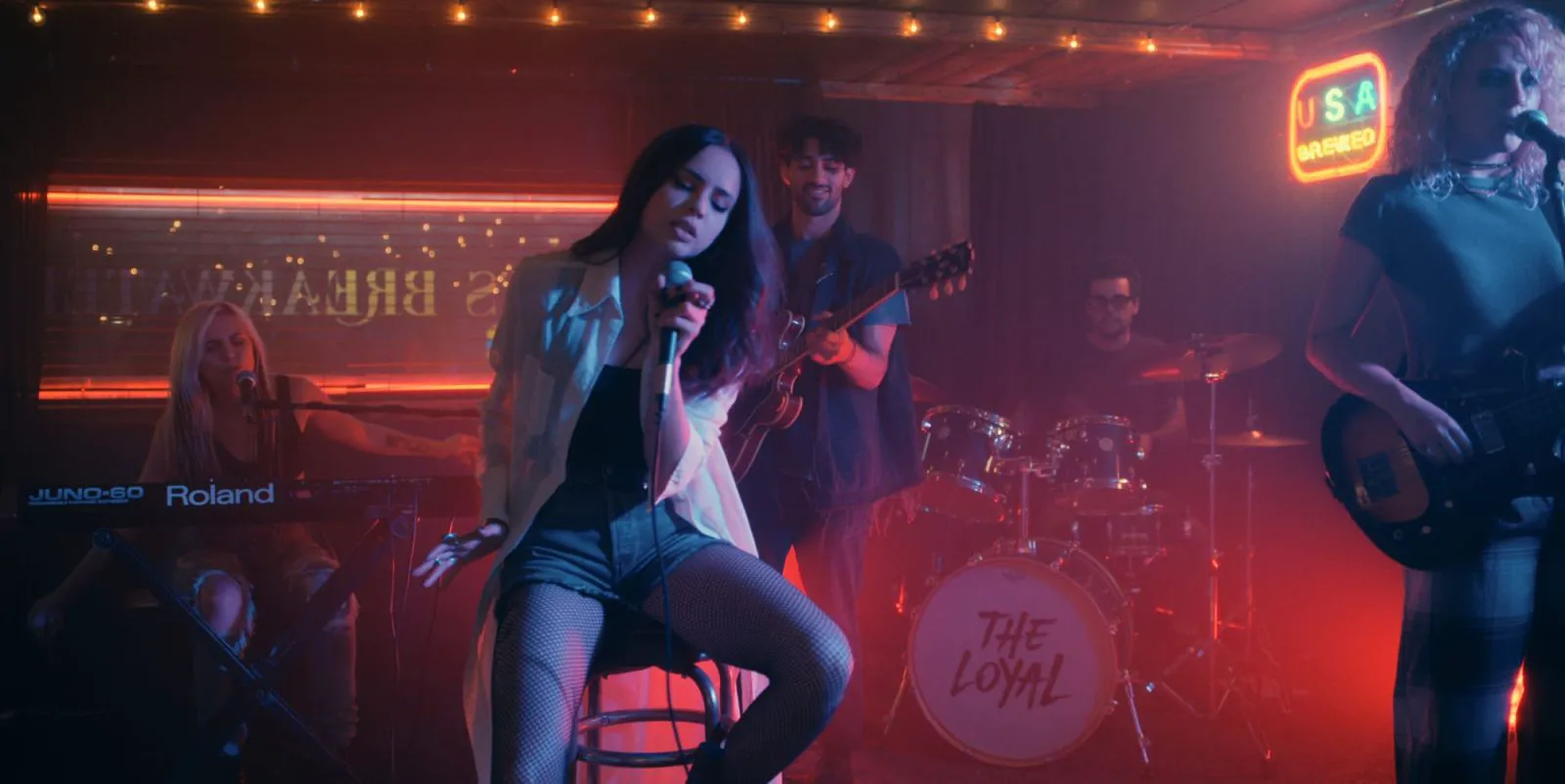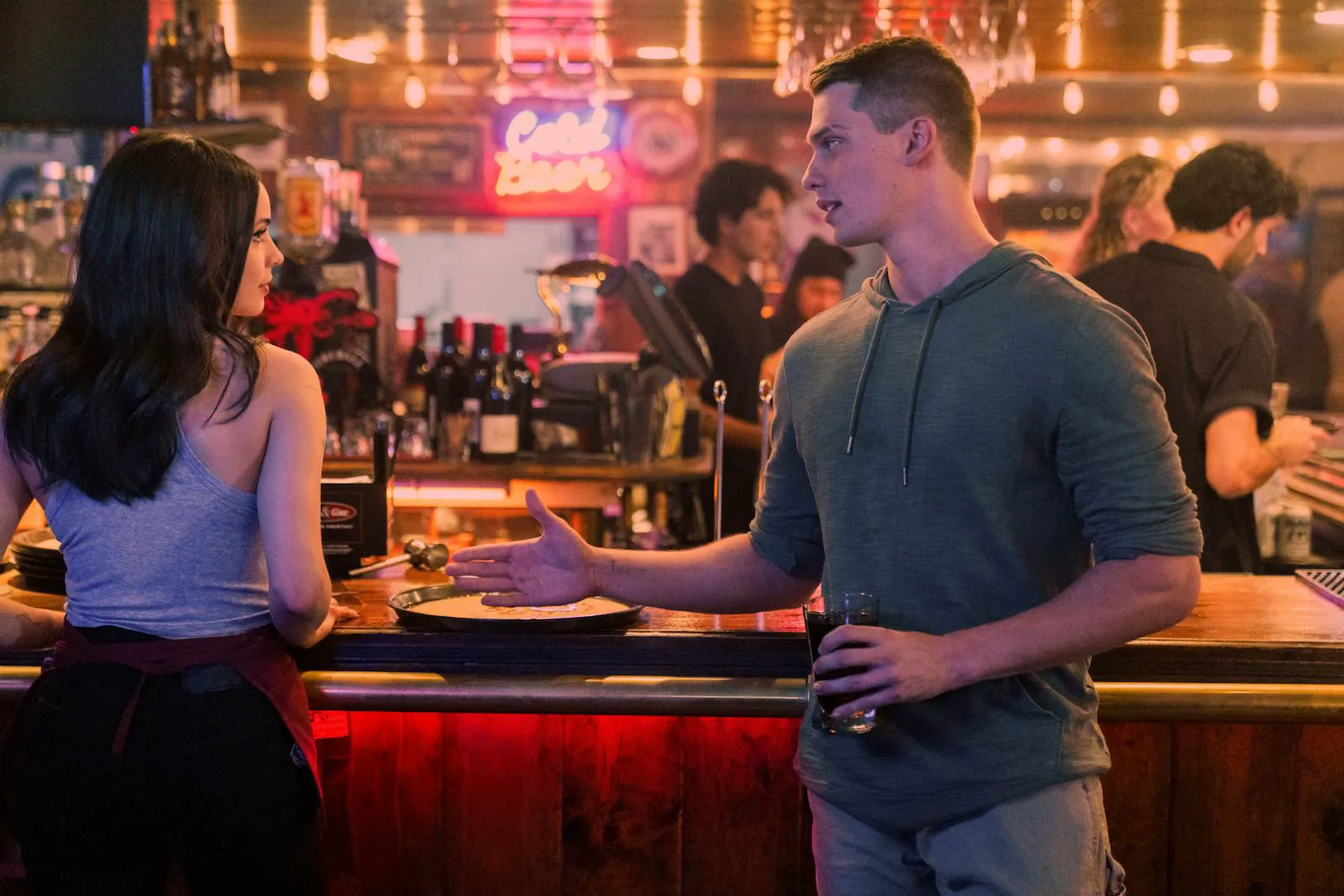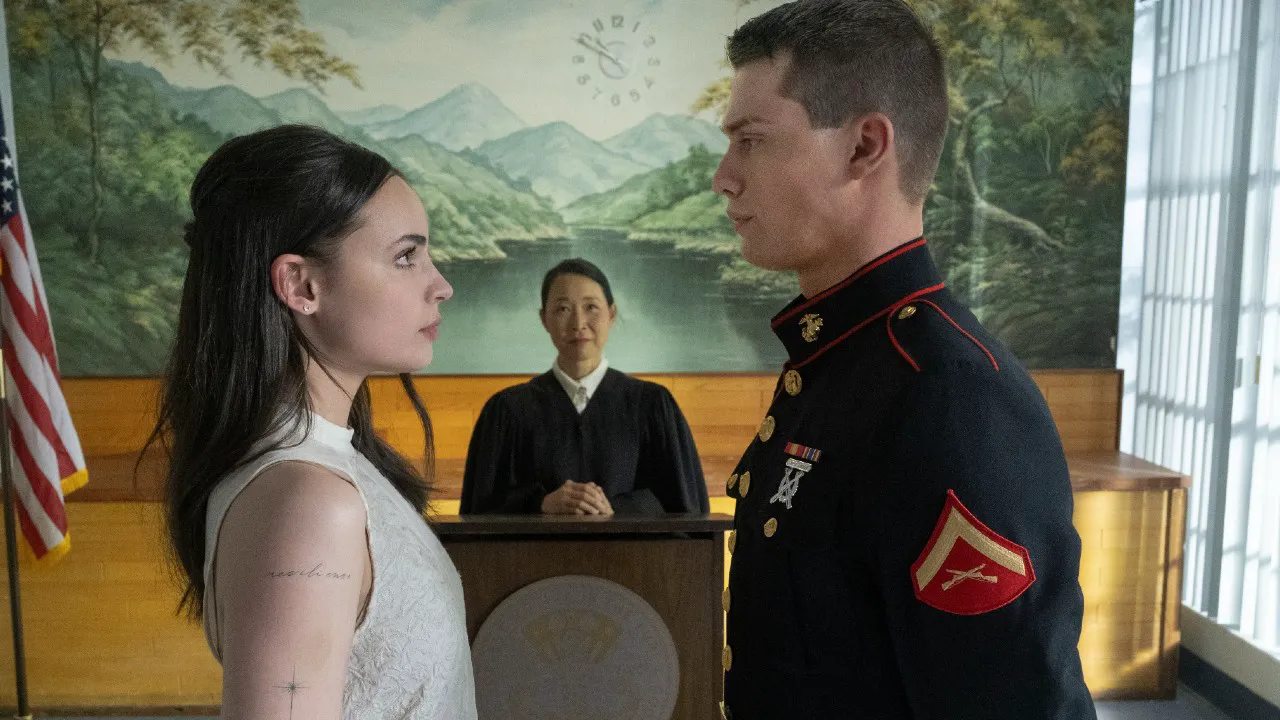Purple Hearts: Atypical Romance or Social Commentary?
The world’s leading streaming platform often funds modest, popcorn-worthy romantic projects that are enjoyable with a glass of wine, a huge tub of ice cream, or when you simply crave something light and uncomplicated. These films are remarkably similar, absurdly elaborate, saccharinely sweet, and so on – typical Hallmark Christmas movies. However, it’s still the last month of summer, and the yearning for melodrama is slowly making itself known.
The story revolves around Cassie, a young woman and the daughter of an immigrant, who works as a waitress and occasionally writes songs for her band. Six months ago, she was diagnosed with diabetes, but her insurance doesn’t cover insulin, forcing her to live paycheck to paycheck. One day, she meets Luke, a Marine, two weeks before his deployment. Cassie hatches a brilliant plan to take advantage of all the privileges afforded to a wife of an American soldier, but the sham marriage evolves into something more.

Sofia Carson as Cassie in a still from “Purple Hearts”
At first glance, the story seems overly familiar – how many Hollywood and other films exist with the same premise and a guaranteed happy ending? We’re sure even some adult films started the same way. However, despite the “marriage of convenience” plot that feels like fan fiction, director Elizabeth Allen (episodes of “Why Women Kill,” 2019) and screenwriter Liz W. Garcia (“Dawson’s Creek,” 1998-2003) try to distance themselves as much as possible from melodramatic tropes. “Purple Hearts” presents itself as a romantic film only superficially, while at its core lies a profound social drama about modern America.
Beyond Romance: A Social Drama Unfolds

Nicholas Galitzine as Luke in a still from “Purple Hearts”
The film opens with a musical performance in the bar where Cassie works, reminiscent of the typical prologue of any story about the “American dream” and “conquering the conditional Olympus.” Just before the viewer can roll their eyes, the counter-argument appears: a mention of the poor state of healthcare in the US, high drug prices, and the terrible treatment of immigrants. All of this is summarized with feminist remarks, although the filmmakers certainly couldn’t have foreseen that some states would ban abortions by the time the film was released. Thus, Cassie is your atypical romantic heroine: she has a sharp tongue, is moderately straightforward, and knows how to stand up for her rights, even though society puts obstacles in her way at every turn. Moreover, she doesn’t understand the life of ordinary office workers and top managers, so she writes songs from the heart. Marriage, husband, children, family – all these values are simply not for her, but fate brought her together with Luke.
Modern Realities: Marriage of Convenience
These are the modern realities, where marriage of convenience is commonplace. Of course, it’s convenient in many cases, but for the wife of an American soldier, the outcome is even better. Cassie desperately needs insulin for a comfortable life, so she is happy to receive all the opportunities that the state she hates provides after marriage. Luke also finds himself in a winning position because he has a large debt from his troubled past. Does this sound like your typical, feel-good melodrama? Our answer is no.

Sofia Carson as Cassie in a still from “Purple Hearts”
Purple as a Symbol of Unity
The color purple can be seen as a combination of red and blue, used by the Republican and Conservative parties in the United States. Cassie represents immigrants, whom the Trump administration, with its open racism, so wanted to get rid of. Luke, on the other hand, is on the opposite side of the barricades because he is going to “defend” the aforementioned government in an unknown land. Why, for what, why – he and the other soldiers continue to be told stories about the fight against terrorism, but more and more young people are dying. If you want to see a real “fight against terrorism,” be sure to watch Paul Schrader’s “The Card Counter” and remember the quotation marks in this text.
Luke and Cassie are modern-day Romeo and Juliet, whose love is impossible on a deeper level, not just as a result of a conflict between two families. This is a real chasm between modern residents of the United States, who are unwilling to take a step towards each other. However, the main characters of this film were able to invent a new, third color for themselves, and that is purple.